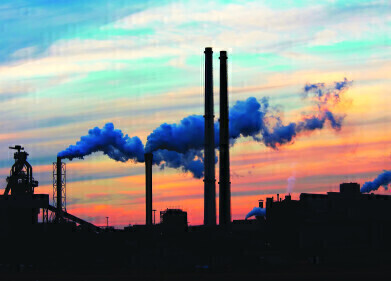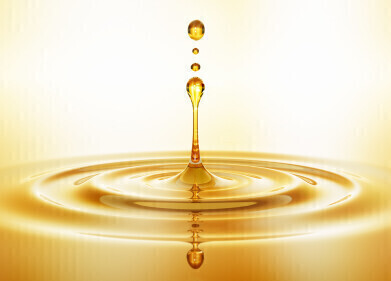Synthetic fuels
Frequently Asked Questions to ASTM International Regarding D1319 Dye Issue
Sep 28 2021
What is ASTM D1319?
• D1319 is one of about 13,000 voluntary consensus standards developed by members of ASTM International.
o D1319’s title is “test method for hydrocarbon types in liquid petroleum products by fluorescent indicator adsorption.” It is a standardized test method used by refiners, labs, and others to measure the volume-percentage of aromatic hydrocarbons, olefins and saturates in petroleum products.
o Members of the ASTM international committee on petroleum, liquid fuels, and lubricants (known as D02) include representatives from government agencies, industry, and labs. These members maintain, develop, and revise D1319, overseeing any changes to its technical content and status.
• D1319’s Scope explains that this test method measures proportions of aromatics, olefins, and saturates.
o An example of why this standard is used/important: According to the U.S. Federal Aviation Administration, high concentrations of aromatics in jet fuel can have adverse effects on turbine engine combustor durability while also producing more smoke and harmful particulates into the environment. D1655 and D7566 use testing of aromatics by D1319 as the referee method, but these specifications also cite D6379 as the accepted alternative. For more information, consult the current FAA Safety Airworthiness Information Bulletin.
What is the current issue related to the dye used to conduct the test?
• According to committee members, early in 2018, a key component of the Fluorescent Indicator Dyed Gel needed to perform Test Method D1319 became unavailable. An alternative dyed gel was substituted, but the reformulated dye gel was later found to be unsuitable for the analysis of jet fuel, diesel fuel and gasoline samples. This resulted in a shortage of the original formulation in the marketplace and led to a robust dialogue among oil companies, laboratories, and government agencies (e.g., FAA, U.S. Environmental Protection Agency). Many such stakeholders are involved in D02.
Are D02 volunteer-members doing something about determining the suitability of the dye? If so, what?
• At a December 2018 meeting of the D02 committee, members approved the ballots of the critical standards to add informational Notes alerting the user of the lot numbers of dye gel that should not be used in performing the analysis. The following standards have been published with this information.
o ASTM D975 - 19b Standard Specification for Diesel Fuel
o ASTM D7467 - 19 Standard Specification for Diesel Fuel Oil, Biodiesel Blend (B6 to B20)
o ASTM D1655 - 19 Standard Specification for Aviation Turbine Fuels
o ASTM D7566 - 19 Standard Specification for Aviation Turbine Fuel Containing Synthesized Hydrocarbons
o ASTM D1319 – 19 Standard Test Method for Hydrocarbon Types in Liquid Petroleum Products by Fluorescent Indicator Adsorption
• Additional discussions focused on revisions to existing test methods or creating new test methods that would provide an alternative solution(s). Committee members registered “work items” focused on using supercritical fluid chromatography and other technologies to help determine the level of aromatics, polynuclear aromatic content, and/or naphthalenes in gasoline, jet fuel, synthetic fuels, and diesel fuels.
o WK66936 Determination of Total Aromatic Hydrocarbons and Total Polynuclear Aromatic Hydrocarbons in Aviation Turbine Fuels and Other Kerosene Range Fuels by Supercritical Fluid Chromatography
• Work based on these discussions continues, with some key revisions completed since the December 2018 meetings. These revisions provided the addition of a correlation equation between relevant standards and D1319 using D6708 protocols.
o ASTM D5186 - 19 Standard Test Method for Determination of the Aromatic Content and Polynuclear Aromatic Content of Diesel Fuels By Supercritical Fluid Chromatography
o ASTM D6591 - 19 Standard Test Method for Determination of Aromatic Hydrocarbon Types in Middle Distillates—High Performance Liquid Chromatography Method with Refractive Index Detection
• At the June 2019 meeting of the D02 committee, members continued this work. Discussions focused on the need to conduct an interlaboratory study program (ILS) to evaluate another reformulation of the dye gel. The ILS could be used to develop an updated precision statement for D1319. The Task Group is currently evaluating a protocol and conducting preliminary ruggedness testing.
o Work Item WK67945 proposed revision
• In August 2019 the reformulation of the dye gel was made available for the ruggedness testing by the manufacturer and was shipped to 10 laboratories. Completed in October 2019, the results of the testing are being evaluated. Results will be presented at the December 2019 meeting of the D02 committee in New Orleans.
What are other test methods for aromatics, olefins, and saturates published by the committee?
Users should consult the appropriate regulatory authorities having jurisdiction for specific compliance requirements.
• Subcommittee Section D02.04.0C’s supercritical fluid chromatography test method D5186 for aromatic content of diesel fuels
• Subcommittee Section D02.04.0L’s gas chromatography test method D5580 for total aromatics in finished motor gasoline
• Subcommittee Section D02.04.0M’s mass spectrometry test method D5769 for total aromatics in spark-ignition engine fuels
• Subcommittee Section D02.04.0L’s gas chromatography test method D5986 for total aromatics in finished gasoline
• Subcommittee Section D02.04.0L’s gas chromatography test method D6296 for total olefins in spark-ignition engine fuels
• Subcommittee Section D02.04.0C’s liquid chromatography test method D6379 for aromatic hydrocarbon types in aviation fuels and petroleum distillates by HPLC
• Subcommittee Section D02.04.0C’s supercritical fluid chromatography test method D6550 for olefin content of gasolines
• Subcommittee Section D02.04.0L’s gas chromatography test method D6839 for saturates, olefins, aromatics in spark-ignition engine fuels
• Subcommittee Section D02.04.0L’s gas chromatography test method D8071 for total aromatics and olefins in automotive spark-ignition engine fuels
• Subcommittee Section D02.04.0L’s gas chromatography test method D8144 for representative aromatics in middle distillates and biodiesel blends
What is the timeframe?
• The next meeting of the D02 committee is in December 2019 in New Orleans. This FAQ document will be updated as a result of those discussions, if not before. Note that ASTM International staff do not have technical expertise, so they support but do not drive the standards development process.
How can I support and/or stay up to date with this activity?
• Anyone can join the D02 committee and get involved in online and in-person standards development efforts. Go to www.astm.org/JOIN.
Is the standard being withdrawn?
• There is no current plan or open work item to withdraw the D1319 voluntary consensus standard.
Digital Edition
PIN 26.1 Feb/Mar 2025
March 2025
Analytical Instrumentation - Elemental Analysis for Quality and Process Control at Refineries, for Lubricants and Wear Metals in Engine Oils - Synthetic Lubricants: New Developments - Scaling...
View all digital editions
Events
Apr 08 2025 Birmingham, UK
Apr 08 2025 Kielce, Poland
Apr 08 2025 Ravenna, Italy
Apr 08 2025 Southampton, UK
Apr 08 2025 London, UK



















